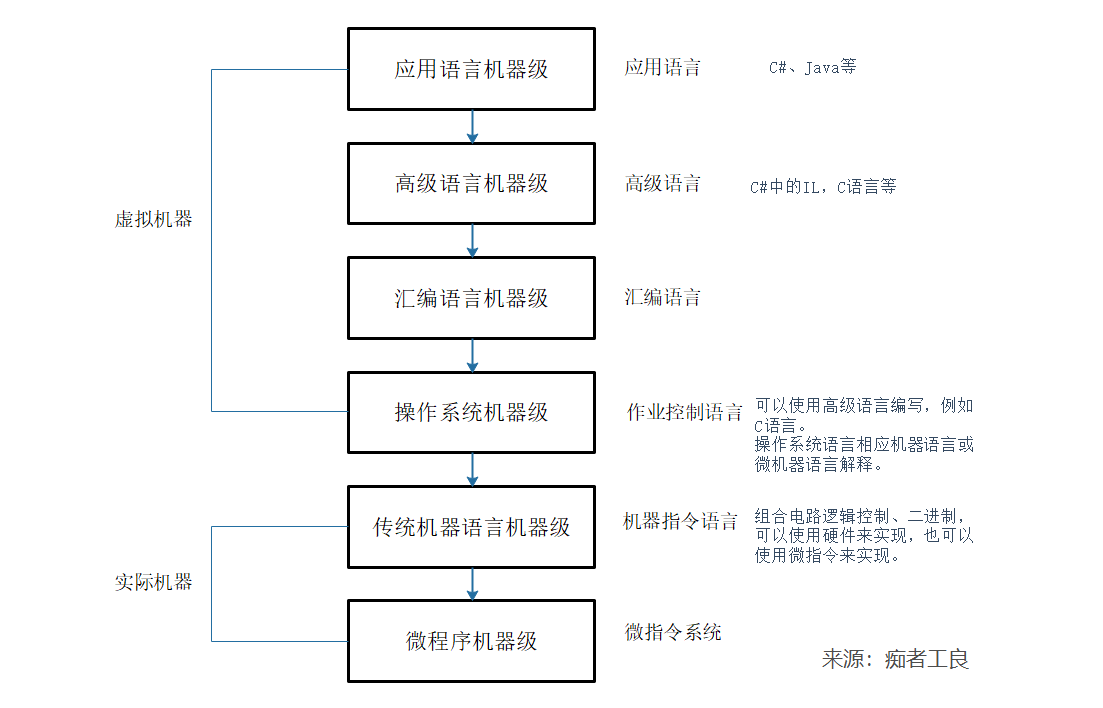1. Hierarchical Structure of Computer Systems
From a linguistic perspective, a computer is a combination of hardware and software, which can be organized into a hierarchical structure composed of multi-layered machine-level components based on functionality.

Different levels of languages can be implemented using translation or interpretation techniques. For example, the C# language is an application-level language that generates IL (Intermediate Language) during compilation, which belongs to translation.
When a program is launched, IL is translated into assembly language, which is executed by the operating system.
This process continuously converts higher-level languages into lower-level languages.
Interpretation refers to the lower-level machine code executing a series of statements or instructions to simulate the functionality of a statement or instruction at a higher machine level.
Virtual machines primarily refer to those implemented using software layers; however, some commands of the operating system are implemented using hardware.
Firmware refers to software that has been embedded in integrated circuit devices, providing software functions through hardware.
2. Computer System Architecture
Computer system architecture, also known as the architecture of computer systems, refers to the system structure of traditional machine language at the machine level. It serves as the intersection interface between hardware and software, abstracting the physical system of machines visible to developers at the virtual machine level.
From the perspective of a computer's hierarchical structure, system architecture is the definition of the interfaces at various levels of the computer system and the functional allocation above and below them.
Therefore, the study of computer system architecture focuses on the functional allocation between hardware and software as well as the definition of interfaces at the traditional machine level.
What content does computer system architecture encompass that requires research?
-
Data representation including types and formats that hardware can directly recognize and process;
-
Addressing methods including the minimum addressable unit, types of addressing, and address calculation;
-
Register organization concerning the settings, quantity, word length, and usage conventions of general/special-purpose registers;
-
Instruction system covering the operation types, formats, ordering methods, and control mechanisms of binary or assembly instructions;
-
Storage system organization detailing the minimum addressable unit, addressing methods, capacity, and maximum addressable space of main memory;
-
Interrupt mechanisms including classification and prioritization of interrupts, the functionality of interrupt handlers, and their entry addresses;
-
Definitions and switches between system machine-level state and user state;
-
Machine-level I/O structure regarding the connection of output/input devices, usage methods, data flow, operation termination, and error indication;
-
The information protection methods and protection mechanisms of the system's individual components.
References: "Computer System Architecture" by Li Xuegan

文章评论